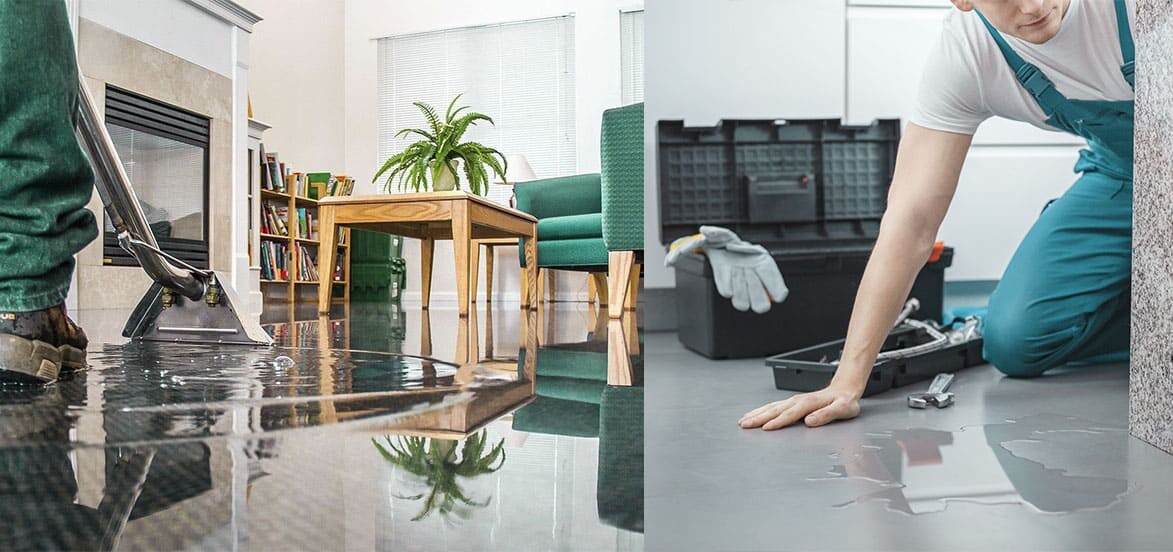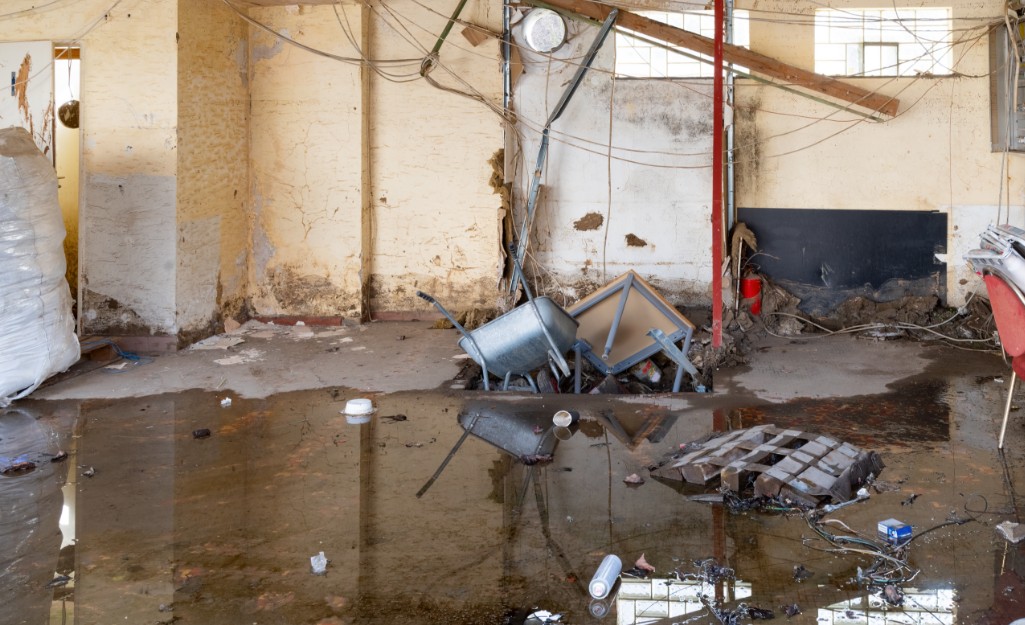Red flags that you need Water Damage Restoration right away
Wiki Article
Water Damage Restoration 101: Comprehending the Process and Cost
Water damage can strike all of a sudden, leaving property owners in a state of complication. Comprehending the repair process is important for reliable healing. From examining the damage to selecting the appropriate company, each action influences the general outcome and price. Variables such as the type of water damage and necessity also play a substantial role. What are the particular techniques used in reconstruction, and exactly how can one prepare for possible costs?Kinds Of Water Damage

Preliminary Evaluation and Inspection

Water Removal Strategies
Following the initial assessment, reliable water extraction techniques are employed to reduce damage and prevent more issues. These strategies involve using specialized tools such as industrial-grade vacuums and submersible pumps - Water Extraction And Drying. The selection of method depends upon the quantity of water present and the sort of materials impacted. For standing water, submersible pumps are commonly made use of for fast elimination, while vacuum cleaners are ideal for extracting water from carpetings and furniture. In addition, progressed methods like water extraction mats might be used for hard-to-reach areas - Flood Cleanup Services. The goal is to get rid of as much water as possible, decreasing the capacity for mold and mildew growth and architectural damage. Prompt and reliable water extraction is crucial in the general water damage restoration procedureDrying and Dehumidification Process
When the water extraction is full, the drying out and dehumidification procedure ends up being crucial to restoring the affected area. This stage generally utilizes industrial-grade dehumidifiers and air moving companies to effectively lower moisture levels. The dehumidifiers pull in moist air, removing excess humidity, while air movers distribute air to speed up evaporation. Monitoring equipment is typically utilized to track moisture and temperature levels, guaranteeing ideal drying problems. The period of this process can differ relying on the extent of the water damage and ecological aspects. It is important to completely completely dry all impacted products, including wall surfaces, flooring, and furnishings, to avoid mold development and structural damage. Appropriate execution of this step is essential for an effective restoration outcome.Cleaning Up and Disinfecting Affected Areas
A complete initial analysis and evaluation of influenced areas is important to determine contamination levels once the drying out process is complete. Flood Cleanup Services. Effective cleaning strategies and suitable items should after that be utilized to get rid of debris and spots. Ultimately, sanitization and disinfection approaches are necessary to guarantee that dangerous virus are gotten rid of, bring back the room to a risk-free problemInitial Analysis and Inspection
Before starting any restoration efforts, a detailed initial assessment and examination of the affected areas are vital for reliable cleaning and disinfecting. This process includes recognizing the degree of water damage, determining the resource of the water intrusion, and reviewing the materials influenced. Examiners generally look for signs of mold development, architectural stability issues, and damaged valuables. The analysis also consists of checking wetness degrees using specific devices to assure no covert water pockets stay, as these can bring about more issues. Recording the findings is vital for preparing the next action in the restoration procedure. A thorough first evaluation allows remediation professionals to design a targeted strategy for efficient cleaning and disinfecting, inevitably decreasing damage and wellness dangers.Cleaning Strategies and Products
Efficient cleansing and disinfecting of water-damaged areas need a variety of items and techniques customized to the specific materials affected. For permeable surfaces like drywall and carpeting, extraction techniques are vital to get rid of excess wetness, followed by deep cleaning with specialized detergents. Non-porous products such as floor tile or metal can be cleansed using commercial-grade cleaners that effectively get rid of impurities. Vapor cleaning is one more reliable strategy, specifically for carpets and furniture, as it utilizes high temperatures to get rid of bacteria and mold and mildew (Water Damage Restoration). Additionally, green items are significantly prominent for their safety and security and efficiency - Water Damage Restoration. Eventually, choosing the appropriate cleansing techniques and items not only assures instant cleanliness yet also help in avoiding more damage and carcinogen related to water invasionSanitization and Disinfection Approaches
When attending to water damage, correct sanitization and disinfection approaches are crucial to ensure the safety and health and wellness of the affected atmosphere. After first cleaning, surfaces need to be treated with ideal disinfectants to eliminate microorganisms, mold, and bacteria that prosper in wet problems. Common techniques consist of the use of EPA-approved chemical disinfectants, which can be applied via spraying or wiping methods. Furthermore, ultraviolet (UV) light systems can efficiently sanitize locations by reducing the effects of microbes without severe chemicals. The option of method typically relies on the sort of materials influenced and the level of contamination. Ultimately, thorough sanitization not just recovers a secure space however likewise aids prevent future health risks related to sticking around dampness and mold and mildew development.
Fixings and Restoration Options
Evaluating the damage triggered by water exposure is essential for determining the ideal repairs and reconstruction choices. Home owners might encounter different problems, including damaged drywall, warped floor covering, and jeopardized structural aspects. Depending upon the level of the damage, repair work may involve replacing sections of drywall, mounting brand-new flooring, or strengthening structural beams. In instances of serious damage, total replacement of affected materials could be necessary. Additionally, specialist conservators commonly advise utilizing wetness meters to assess hidden moisture degrees before choosing the finest strategy. It is very important to act quickly to avoid mold and mildew growth and more damage. Selecting the appropriate options not only recovers the home however also assures long-lasting security and functionality.Variables Influencing Restoration Prices

The degree of water damage directly affects the reconstruction costs property owners can expect to sustain. Aspects such as the resource of the water, the period of direct exposure, and the damaged products significantly influence prices. Tidy water damage from a busted pipe is normally much less costly to restore compared to damage triggered by sewer. In addition, the degree of contamination determines the demand for specialized cleansing and disposal services, further enhancing costs. Geographical area also plays a role, as regional labor prices and schedule of restoration solutions can differ. The necessity of the action influences expenses; quicker interventions usually lead to reduce general costs by avoiding further damage. Understanding these elements is vital for homeowners when approximating restoration costs.
The three key kinds of water damage are categorized based on contamination levels: tidy water, grey water, and black water. An extensive preliminary evaluation and evaluation are vital steps in the water damage reconstruction process. For standing water, completely submersible pumps are usually used for rapid elimination, while vacuum cleaners are optimal for extracting water from carpetings and upholstery. The degree of water damage directly influences the repair sets you back house click here owners can anticipate to incur. Tidy water damage from a broken pipeline is typically much less expensive to restore contrasted to damage caused by sewer.
Report this wiki page